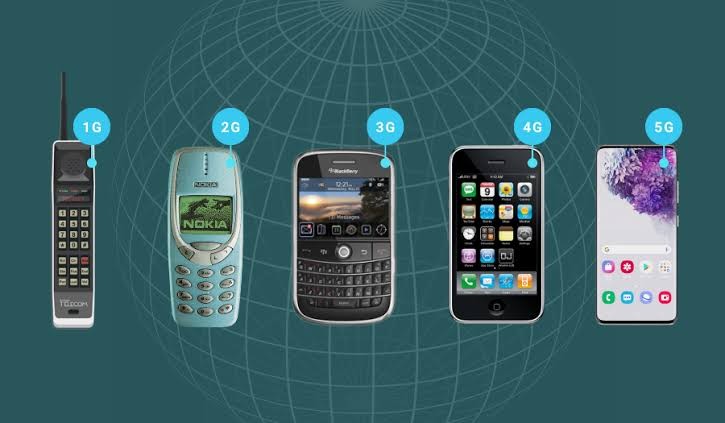Evolution of Mobile Networks – From 1G to 5G and Beyond
Introduction
The evolution of mobile networks has been a remarkable journey, marked by significant milestones and technological advancements. From the humble beginnings of 1G in the 1980s to the upcoming era of 5G devices and beyond, each generation has brought about transformative changes in how we communicate and connect with the world. At the forefront of this evolution stands Long Term Evolution (LTE), the foundation of 4G wireless transmission data, which has revolutionized mobile connectivity since its inception in 2008. This article delves into the intricate details of LTE, its impact on global telecommunications, and its role in shaping the future of mobile networks.
Understanding LTE
LTE, short for Long Term Evolution, represents the fourth generation of mobile network technology, succeeding the Universal Mobile Telecommunications System (UMTS) or 3G networks. Developed and maintained by the 3rd Generation Partnership Project (3GPP), LTE is a global standard that embodies the pinnacle of wireless communication technologies. Its name, “Long Term Evolution,” aptly captures the continuous evolution and refinement of mobile networks to meet the growing demands of users worldwide.
Key Features and Advantages of LTE
LTE boasts several key features and advantages that set it apart from its predecessors:
- Enhanced Speed and Performance: One of the most notable features of LTE is its unparalleled speed and performance. With theoretical maximum speeds reaching up to 100Mbps and practical speeds averaging around 15Mbps, LTE delivers significantly faster data rates compared to 3G technologies.
- Low Latency: LTE is designed for lower latency, ensuring minimal delay in data transmission. This low latency is particularly crucial for time-sensitive applications such as voice services and real-time multimedia streaming.
- Increased Bandwidth: LTE offers increased bandwidth, enabling faster access to content and applications, especially video streaming, which was previously limited to fixed broadband systems.
- All-IP Architecture: LTE adopts an all-IP flat networking structure, paving the way for seamless integration with other IP-based services and applications. This architecture facilitates the convergence of various communication services, including voice, video, and data, through the IP Multimedia Subsystem (IMS).
- Voice over LTE (VoLTE): VoLTE represents an enhanced version of LTE tailored for high-definition voice and video calls. It offers superior call quality, broader coverage, and improved battery life compared to traditional voice services.
LTE-A and IoT Integration
LTE-Advanced (LTE-A), also known as 4G+, represents a further advancement of LTE technology, offering even higher data rates and improved performance. LTE-A is instrumental in supporting the Internet of Things (IoT), enabling seamless connectivity for a wide range of IoT devices across various industries. From low-power, wide-area networks (LPWAN) to high-bandwidth applications, LTE-A caters to diverse IoT requirements, driving the proliferation of connected devices and smart technologies.
Global Adoption and Expansion
The widespread adoption of LTE underscores its global success as the predominant cellular technology. As of December 2023, LTE subscriptions accounted for 60% of the 5.4 billion unique mobile subscriptions worldwide, serving two-thirds of the global mobile user base. With 791 telecom operators operating LTE networks in 240 countries and territories, LTE has truly established itself as the cornerstone of modern telecommunications infrastructure.
United States’ Impressive Growth in LTE
The United States has experienced significant growth in LTE networks, driven by rapid advancements in technology and a surge in consumer demand for high-speed connectivity. In recent years, the proliferation of LTE has transformed the telecommunications landscape, reshaping how Americans communicate, work, and access information.
In 2020, the United States witnessed a substantial increase in LTE adoption, with millions of new users joining 4G networks. This surge in demand can be attributed to the growing reliance on mobile devices for both personal and professional use, as well as the increasing popularity of data-intensive applications such as video streaming, online gaming, and social media.
According to industry reports, 4G data consumption in the United States accounted for a significant portion of total mobile traffic, highlighting the widespread use and importance of LTE technology. As more Americans embrace the benefits of high-speed connectivity, LTE subscriptions are projected to continue their upward trajectory.
The Ericsson Mobility Report forecasts that the United States will reach a peak of over X million 4G subscriptions by 2024, underscoring the country’s pivotal role in driving LTE adoption and digital innovation. This projected growth reflects the nation’s commitment to expanding and enhancing its telecommunications infrastructure to meet the evolving needs of consumers and businesses alike.
Future Outlook: 5G and Beyond
While LTE continues to dominate the mobile landscape, the emergence of 5G heralds a new era of connectivity, offering unprecedented speed, capacity, and reliability. With initial rollouts commencing in 2019 and widespread adoption expected by 2025, 5G promises to revolutionize not only mobile broadband but also critical communications and IoT applications. As we look ahead to the future, the journey from 1G to 5G exemplifies the relentless pursuit of innovation and the enduring evolution of mobile networks to meet the evolving needs of society.
Conclusion
In conclusion, LTE represents a pivotal milestone in the evolution of mobile networks, embodying the relentless pursuit of excellence and innovation in telecommunications. With its unmatched speed, reliability, and global adoption, LTE has transformed the way we communicate, connect, and conduct business in the digital age. As we embrace the dawn of 5G and beyond, LTE serves as a testament to the power of technology to reshape our world and propel us towards a more connected and prosperous future.
Stay in touch to get more updates & news on Discover Headline!







